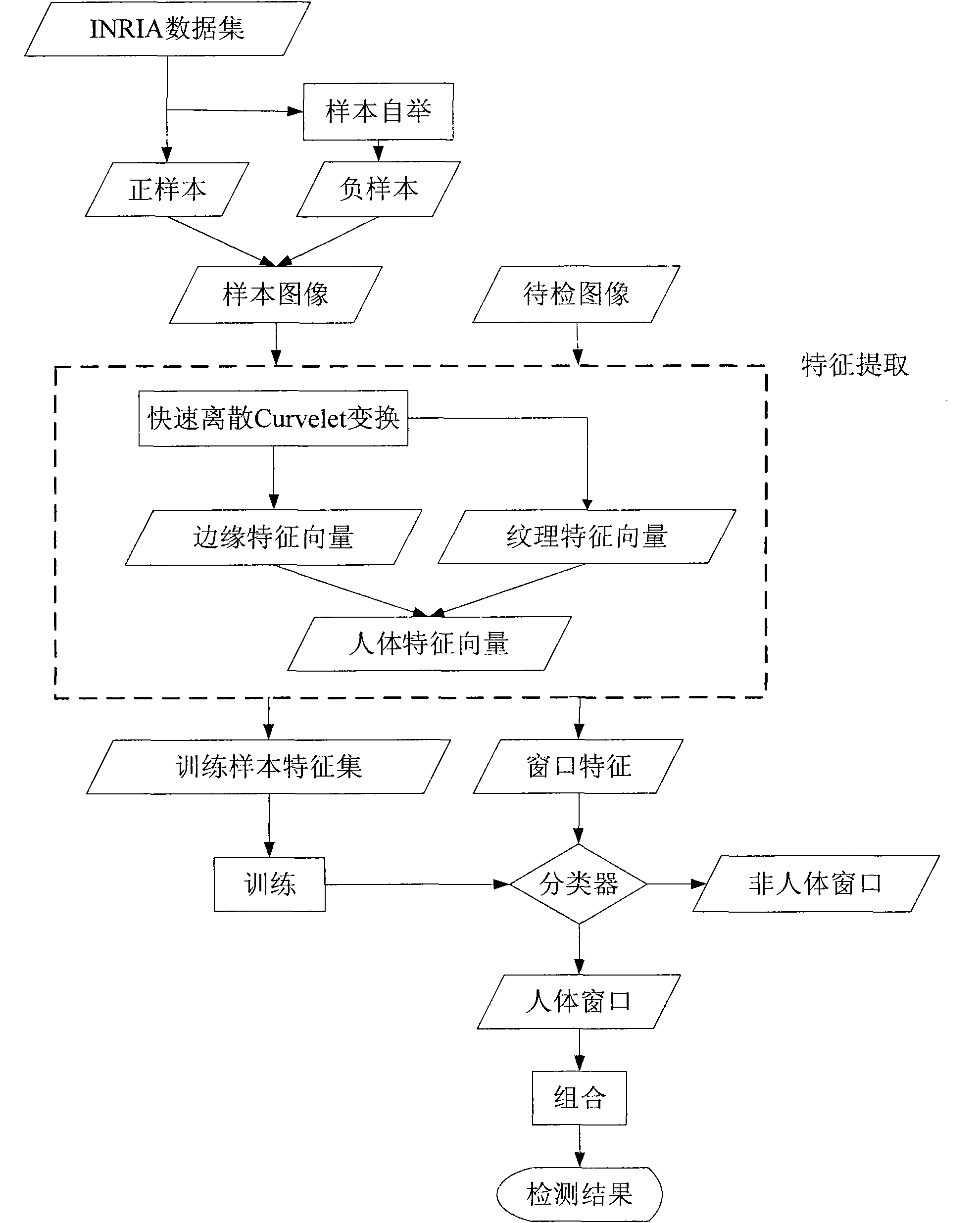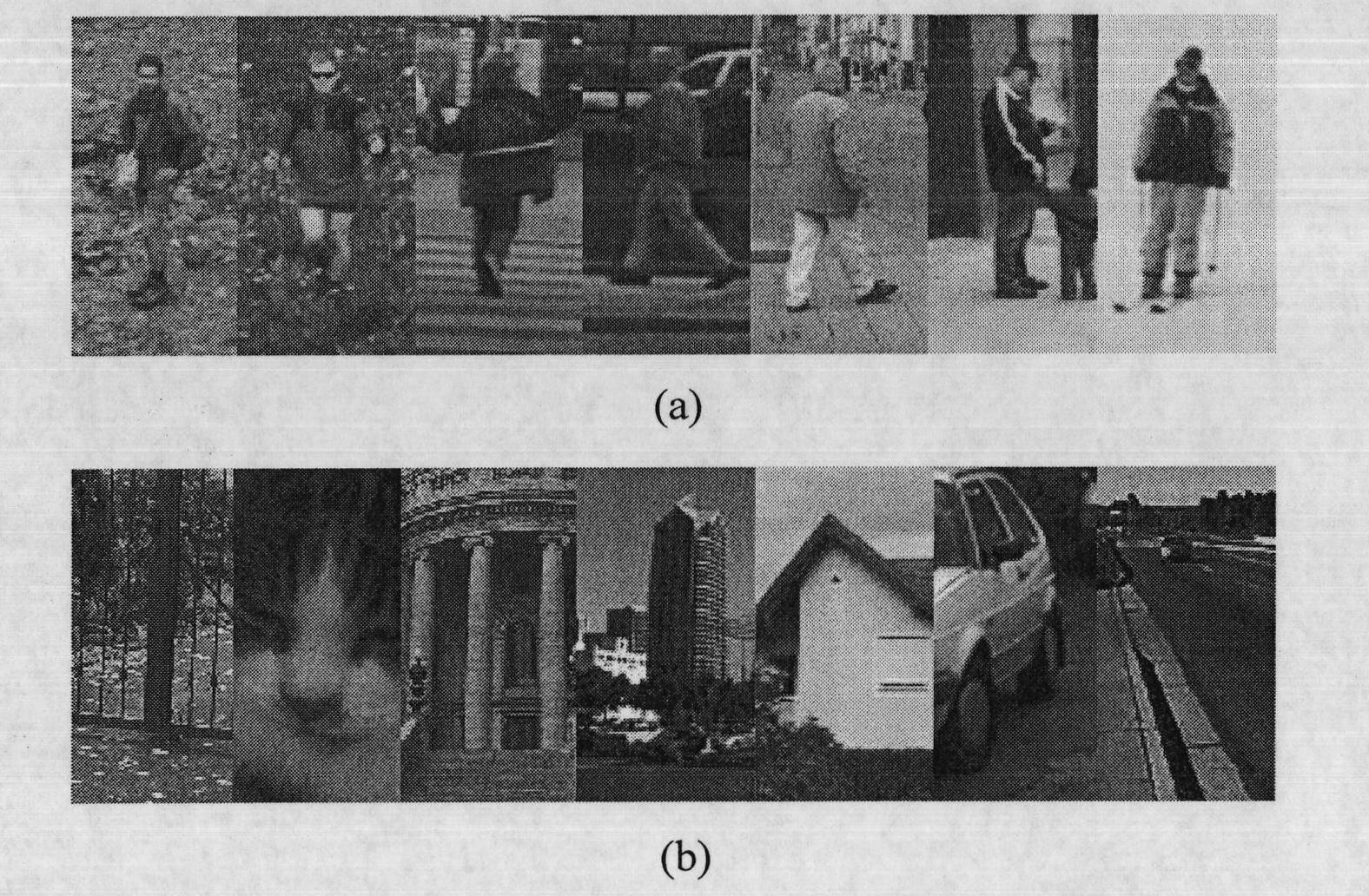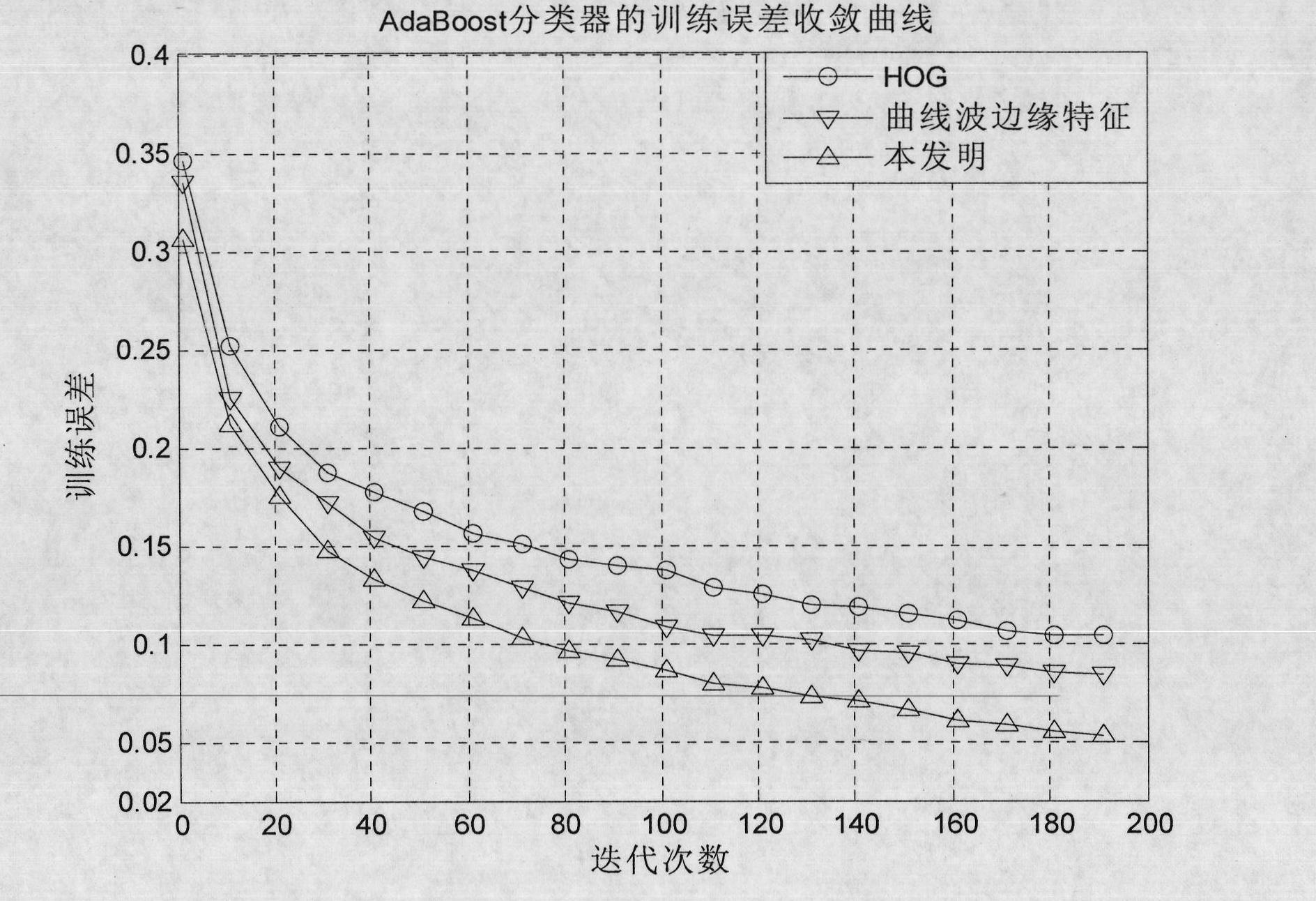Second generation curvelet transform-based static human detection method
A technology of human body detection and curve wave, which is applied in the field of pattern recognition, to shorten the training time, facilitate the training of classifiers, and improve the accuracy rate
- Summary
- Abstract
- Description
- Claims
- Application Information
AI Technical Summary
Problems solved by technology
Method used
Image
Examples
Embodiment Construction
[0028] The invention utilizes the curve wave transformation, extracts the edge feature and the texture feature of the curve wave transformation coefficient as the feature of the image, classifies and detects the human body in the image. After extracting the edge and texture joint features based on curvelet transform, the AdaBoost classification algorithm is used for sample training, and the classification results are compared with HOG features. Described in detail as figure 1 , image 3 and Figure 4 .
[0029] refer to figure 1 , the specific implementation process of the present invention is as follows:
[0030] Step 1, in the INRIA database, obtain negative samples through bootstrap operation, and form a training sample set together with other positive samples in the database.
[0031] The database used in the present invention comes from the INRIA human database, and the download address is: http: / / pascal.inrialpes.fr / data / human / . Since the database does not provide ...
PUM
 Login to View More
Login to View More Abstract
Description
Claims
Application Information
 Login to View More
Login to View More - R&D
- Intellectual Property
- Life Sciences
- Materials
- Tech Scout
- Unparalleled Data Quality
- Higher Quality Content
- 60% Fewer Hallucinations
Browse by: Latest US Patents, China's latest patents, Technical Efficacy Thesaurus, Application Domain, Technology Topic, Popular Technical Reports.
© 2025 PatSnap. All rights reserved.Legal|Privacy policy|Modern Slavery Act Transparency Statement|Sitemap|About US| Contact US: help@patsnap.com



